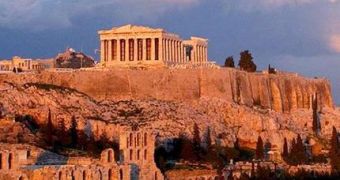It appears that two and a half millennia of natural activity were not a problem for the large construction of the Acropolis to withstand, as it successfully faced powerful storms, extreme temperatures, drought, snow and earthquakes. The ruined appearance it has today is rather the work of man than that of nature. This is why scientists have set out to further investigate the building, and to also find out whether there is any way to protect it against the possible natural disasters that might occur in the future, especially against earthquakes, which are known to be most devastating for constructions in general.
In this regard, a large network of barely visible devices, comprising accelerographs (tiny, box-shaped, earthquake-movement measuring tools) and fiber optic sensors, is being installed, in order to indicate what the most vulnerable regions are, whenever a natural phenomenon affects the site. Six accelerographs will be placed across the Acropolis, starting from next week, some at the foot of the hill, others midway up the hill, while the last of them will monitor the Parthenon – the well-known monument built for the goddess Athena between 447 and 432 BC.
In an interview to The Associated Press, the chief civil engineer responsible with the defensive circuit wall of the Acropolis, Dimitrios Egglezos, stated that, “The greatest danger for our monuments at the moment is earthquakes. This is the first system that we've installed to record the (natural) activity that affects our monuments.” Maria Ioannidou, lead supervisor of the restoration activities at the Acropolis, emphasized on that, by stating “The measurement of earthquakes and their consequences on the monuments is essential.”
The sensors are small wires, placed on different walls in order to help tracking the minor impacts of weather or earthquakes on their structure, as Greece is known to be among the most seismically active regions on the planet. Given that it had been enduring such quakes for millennia, the monument could not escape the influence of man. On September 26, 1687, it was still almost in perfect condition, until some Ottoman troupes began to use it as an ammunition storage facility, which was blown away during a later Venice bombardment. In 1806, Thomas Bruce, the 7th Earl of Elgin, removed part of the remaining wall sculptures, which were sold, later on, to the British Museum, where they still are displayed now.
The tools installed by the experts will also give them great insight into how the building manages to resist the forces of nature so well. “The earthquakes that don't cause damage are very useful because we have a natural... experiment which doesn't destroy the monument but gives us valuable information about how these structures behave,” explained Egglezos. He also added that they would need about 2 years of data collecting in order to be able to draw some reliable results.

 14 DAY TRIAL //
14 DAY TRIAL //